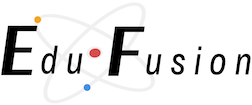As if adult students didn’t face enough challenges and distractions from their coursework with life responsibilities like work and supporting their families, the psychological distance inherent to the online classroom can present an additional barrier to academic success. Learning is, after all, social by nature. We benefit from the human touch of face-to-face interaction in learning. Therefore, removing it seems counterintuitive. Of course, there are great advantages to a delivery method that transcends time and geography; distance learning does just that. When we traded in that brick and mortar environment, we didn’t come away empty handed. Still, the distance learning model isn’t perfect and continuous improvement will be necessary for it to approach its ideal state. Given its importance to learning, would student engagement not be a logical first step?
The idea of engagement as a prerequisite to learning is arguably self-evident. We can all agree that without engagement in a learning endeavor, little follows intention. It is the necessary starting point, the springboard to other necessary processes of learning. For an online educator, it is the first order of business.
I recently completed my Master of Arts in Education degree online, an eye-opening experience spanning approximately two years. While the materials in my courses were outstanding, by and large the quality of instruction was lacking, particularly in the area of engagement. There were a couple of instructors that were exceptional, but the majority failed to do their part in engaging me. I think that all distance learning educators should sit at the opposite side of the table as an online student at least once. Try as we may to envision the student experience for which we are greatly responsible, there simply is no substitute for actually living it. It’s a poignant mirror that informs us on what aspects of our instructional approach we should adjust and how they should be adjusted. For most educators, the need for higher engagement will sit front and center in that reflection.
When it comes to ideas on a definition of engagement relative to learning, there exist differences of opinion. Variance notwithstanding, Axelson and Flick (2011) point to Alexander Astin’s popular definition of “quantity and quality of physical and psychological energy that students invest in the college experience” and the causal effect of that involvement on learning. Further, they prescribe a more refined question to ask about student engagement: “How do we engage (cognitively, behaviorally, and/or emotionally) type X students most effectively in type Y learning processes/contexts so that they will attain knowledge, skill, or disposition Z?” (pp. 40-41). Indeed, engagement and what promotes it in distance education is a topic worthy of ongoing research and discussion if for no other reason than the fact that the lack thereof is a common denominator in struggling student situations. Moreover, it’s an aspect of distance education that educators can positively affect.
Clark and Mayer (2011) maintain that there are two types of engagement, behavioral and psychological. Behavioral engagement is an overt action taken by a learner in a learning situation and psychological engagement entails cognitive processes that build knowledge or skills. Within the required combination of both types of engagement, there must be high psychological engagement for learning to occur whereas either a high or low behavioral engagement suffices. This places a higher importance on the psychology of the matter.
There is a call to action. Online educators can, and should, employ specific practices to focus students’ attention. This “mindfulness” promotes organization, preparation, performance, critical thinking and engagement that fosters conduct that is adherent to college standards (Caruth, 2018, p. 23). While successfully engaging students in an online classroom can entail a number of variables, one critical avenue involves the use of media elements with effective instructional methods. Distance learning educators should seek to transform the online classroom into an intellectually engaging environment through the skilled and intentional use of multimedia to leverage students’ visual and auditory senses. As one example, Cerniglia (2011) points to the increase in instructional effectiveness through the use of video communication in the classroom (as cited in Krause, Portolese, & Bonner, 2017). Probably one of the most significant benefits of online classroom video communication is the manner in which it personalizes the learning experience by adding a human touch to what could otherwise be seen as a relatively impersonal learning environment. Could the human touch be one of the answers to the student engagement question?
Our students need to get to know us in some way; they need to know that though we may be miles away we are sitting just on the other side of the screen from them and we are real people who are interested in their academic success. Concepts can be taught in different ways; however, the goal is to teach them in ways that stimulate the mind and pique interest on a sensory level, at a minimum. From there, students can be more easily led along the educational journey of an online course. They become willing passengers that are more open to inspiration and learning. This is an integral part of the educator’s role and, within the context of the online classroom, requires that we use one of our greatest learning tools to our advantage: Multimedia.
References
Axelson, R. D., & Flick, A. (2011). Defining student engagement. Change, 43(1), 38-43. doi:10.1080/00091383.2011.533096.
Caruth, G. g. (2018). Student Engagement, Retention, and Motivation: Assessing Academic Success in Today’s College Students. Participatory Educational Research,5(1), 17-30. doi:10.11203/per.18.4.5.1.
Clark, R. C., & Mayer, R. E. (2011). e-learning and the science of instruction : Proven guidelines for consumers and designers of multimedia learning. Hoboken: Wiley.
Krause, J., Portolese, L., & Bonner, J. (2017). Student perceptions of the use of multimedia for online course communication. Online Learning, 21(3), 36-49. doi:10.24059/olj.v21i3.1198.

